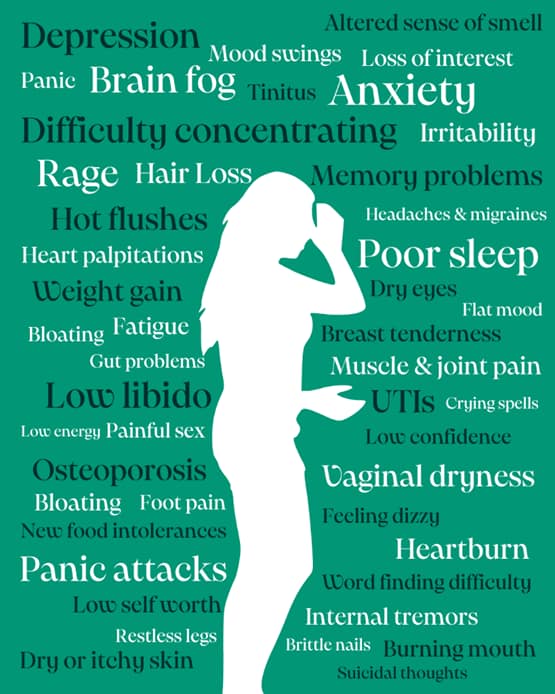
The double empathy problem gives autistic people a voice
When in emotional distress, what kind of response do you expect from others? Perhaps a hug, or a validation of your feelings? If instead you receive pragmatic advice, it may feel insensitive, mean, or even cruel. Yet for an autistic person, this advice might have been a sincere expression of empathy for you. When misunderstandings like this occur between autistic and non-autistic people, who is to blame?
Autistic people are often labelled as “mind-blind” of incapable of empathy, however this assumption centres the perspectives of neurotypical people.
Heasman and Gillespie (2018) found that non-autistic family members typically attribute communication problems to the autistic person. This reflects a larger pattern: autistic people are often seen as inherently socially impaired, while neurotypical perspectives are treated as the default – an assumption grounded in the theory of mind model of autism. The theory of mind model suggests that autistic people experience difficulties in inferring others’ thoughts, feelings, and states of mind, often being labelled as “mind-blind” or incapable of empathy (Baron-Cohen et al., 1997; Baron-Cohen, 2013; Milton et al., 2023). The model centres the perspectives of neurotypical people, and reinforces stigma by portraying autistic individuals as unempathetic, and therefore as non-moral, or even less human (Milton et al., 2023; Tewes, 2024). Unsurprisingly, much of the research shaped by this view has treated autistic participants as clinical subjects, with a focus on reducing symptoms rather than considering their autistic perspectives and experiences (DeThorne, 2020).
The double empathy problem proposes that social difficulties of autistic people result from a mismatch in communication styles between those with and without autism.
In 2012, Damian Milton, a sociologist, social psychologist, and an autistic person himself, introduced the double empathy problem, which proposes that social difficulties of autistic people result from a mismatch in communication styles between those with and without autism (Milton, 2012). Autistic people are more likely to see miscommunication as a shared responsibility, attributing social difficulties to both parties rather than to one side alone (Heasman and Gillespie, 2018). The double empathy problem has been proposed as an alternative to the traditional theory of mind model (Williams, 2021). Interestingly, qualitative research exploring autistic individuals’ experiences, as well as accounts of parents of autistic children or autistic researchers themselves, did not support the commonly accepted “lack of empathy” hypothesis (Milton, 2017). Instead, they revealed that autistic expressions of empathy and emotion often differ from neurotypical norms and were likely misinterpreted in earlier studies (DeThorne, 2020). The double empathy problem argues that those without autism have as much difficulty understanding those with autism as vice versa. It frames communication, including the expression of empathy, as a bidirectional process for which both parties share responsibility. As a result, people with a shared neurotype tend to communicate more easily with one another; autistic people communicate more easily with autistic people, and neurotypical people communicate more easily with neurotypical people. However, when two different neurotypes communicate, it leads to mutual misunderstandings.
According to the double empathy problem, autistic people communicate more easily with autistic people, neurotypical people communicate more easily with neurotypical people, but when two different neurotypes communicate this leads to mutual misunderstandings.
Research shows mixed evidence regarding the theory of mind model for some time now: some studies suggest that theory of mind is not impaired in certain autistic individuals, or is not a strong predictor of autistic traits (Gernsbacher & Yergeau, 2019; Loukusa et al., 2023). Meanwhile, although still an emerging field, the double empathy problem has gained considerable empirical support. For instance, Sheppard et al. (2015) found that autistic people outperformed non-autistic people at interpreting the mental states of other autistic people in naturalistic video recordings. Similarly, simple animations made by autistic or non-autistic participants were easier to interpret for those with the same neurotype (Edey et al., 2016). Furthermore, in a task resembling the telephone game, where participants needed to pass a message among multiple people, groups of only non-autistic or only autistic participants performed equally well, outperforming mixed groups (Crompton et al., 2020). While autism involves clinically recognized communication differences, these do not always manifest as impairments in adapted or supportive environments. Thus, difficulties in autistic–non-autistic interactions often arise from mismatched communication styles and expectations rather than deficits on either side.
To give autistic people a voice, they must be included not only as subjects of research but also as researchers, educators, clinicians, and policymakers in the field of autism.
The double empathy problem does not dismiss the real communication and social challenges faced by autistic people, their friends, and relatives. On the contrary, it highlights the need for appropriate support in interactions between autistic and non-autistic people, especially in families, education, workplaces, or healthcare settings. By shifting the focus from individual impairment to relational and social dynamics, it encourages more inclusive and responsive environments. Most importantly, it sees autistic people not as clinical subjects but as individuals whose voices matter. Autistic people may, in fact, be best equipped to understand those with autism, and for this reason, they must be included not only as subjects of research but also as researchers, educators, clinicians, and policymakers in the field of autism.
References
Baron-Cohen, S. (2013). Empathy deficits in autism and psychopaths. In Oxford University Press eBooks (pp. 212–215). https://doi.org/10.1093/acprof:oso/9780199890712.003.0038
Baron-Cohen, S., Cosmides, L., & Tooby, J. (1997). Mindblindness: An Essay on Autism and Theory of Mind. Revised ed. Cambridge London: Bradford Books.
Crompton, C. J., Ropar, D., Evans-Williams, C. V., Flynn, E. G., & Fletcher-Watson, S. (2020). Autistic peer-to-peer information transfer is highly effective. Autism, 24(7), 1704–1712. https://doi.org/10.1177/1362361320919286
DeThorne, L. S. (2020). Revealing the double empathy problem. ASHA Leader, 25(3), 58–65. https://doi.org/10.1044/leader.ftr2.25042020.58
Edey, R., Cook, J., Brewer, R., Johnson, M. H., Bird, G., & Press, C. (2016). Interaction takes two: Typical adults exhibit mind-blindness towards those with autism spectrum disorder. Journal of abnormal psychology, 125(7), 879–885. https://doi.org/10.1037/abn0000199
Gernsbacher, M. A., & Yergeau, M. (2019). Empirical failures of the claim that autistic people lack a theory of mind. Archives of Scientific Psychology, 7(1), 102–118. https://doi.org/10.1037/arc0000067
Heasman, B. and Gillespie, A. (2018). Perspective-taking is two-sided: misunderstandings between people with Asperger’s syndrome and their family members. Autism, 22(6), 740–750.
Loukusa, S., Gabbatore, I., Kotila, A. R., Dindar, K., Mäkinen, L., Leinonen, E., Mämmelä, L., Bosco, F. M., Jussila, K., Ebeling, H., Hurtig, T. M., & Mattila, M. (2023). Non‐linguistic comprehension, social inference and empathizing skills in autistic young adults, young adults with autistic traits and control young adults: Group differences and interrelatedness of skills. International Journal of Language & Communication Disorders, 58(4), 1133–1147. https://doi.org/10.1111/1460-6984.12848
Milton, D. (2012). On the ontological status of autism: the ‘double empathy problem.’ Disability & Society, 27(6), 883–887. https://doi.org/10.1080/09687599.2012.710008
Milton, D. (2017). A Mismatch of Salience: Explorations of the Nature of Autism from Theory to Practice. https://kar.kent.ac.uk/62668/
Milton, D., Waldock, K. E., & Keates, N. (2023). Autism and the ‘double empathy problem.’ In Routledge eBooks (pp. 78–97). https://doi.org/10.4324/9781003189978-6
Scheeren, A. M., De Rosnay, M., Koot, H. M., & Begeer, S. (2012). Rethinking theory of mind in high‐functioning autism spectrum disorder. Journal of Child Psychology and Psychiatry, 54(6), 628–635. https://doi.org/10.1111/jcpp.12007
Sheppard, E., Pillai, D., Wong, G. T., Ropar, D., & Mitchell, P. (2015). How Easy is it to Read the Minds of People with Autism Spectrum Disorder? Journal of Autism and Developmental Disorders, 46(4), 1247–1254. https://doi.org/10.1007/s10803-015-2662-8
Tewes, C. (2024). Reconsidering the double empathy problem. In F. Liveriero & I. Salvatore (Eds.), Phenomenology and Mind (Vol. 27, pp. 126–138). Rosenberg & Sellier. https://doi.org/10.17454/pam-2710
Williams, G. L. (2021). Theory of autistic mind: A renewed relevance theoretic perspective on so-called autistic pragmatic ‘impairment.’ Journal of Pragmatics, 180, 121–130. https://doi.org/10.1016/j.pragma.2021.04.032
Featuring image
The featuring image was designed and created for this post by Zofia Matczak.




Super interesting! I hadn’t heard of that before, but it makes a lot of sense and shows that what one person or society considers “normal” does not mean that there aren’t others who relate to, experience and understand what is considered “abnormal”.